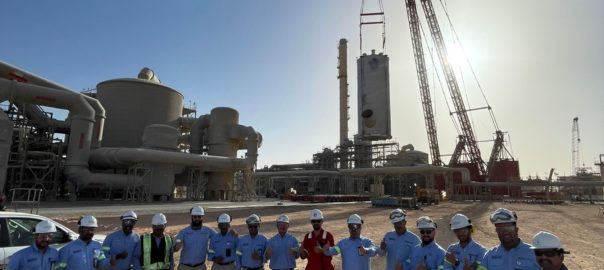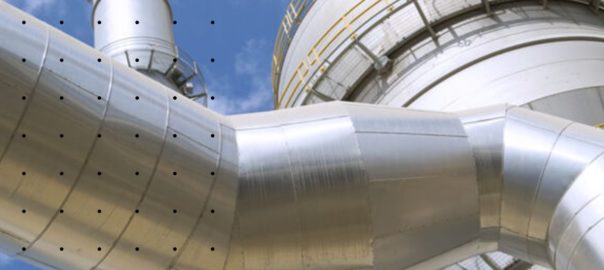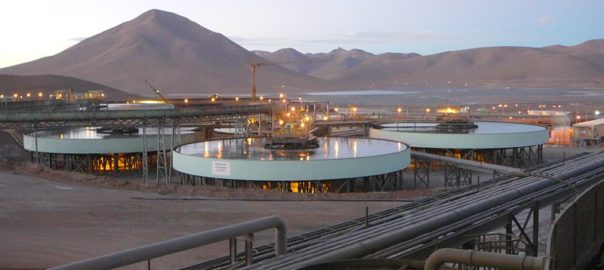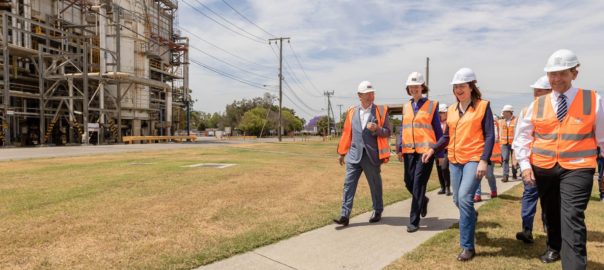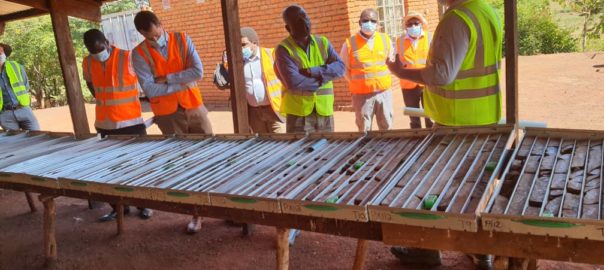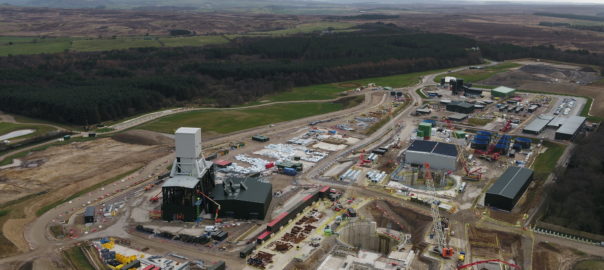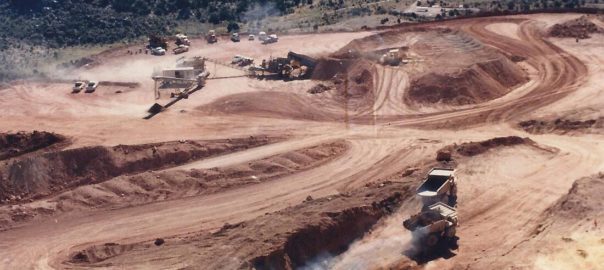The Ma’aden Waad Al Shamal Phosphate Company (MWSPC), based in Saudi Arabia, is the latest company to have benefitted from Mammoet’s specialised logistics offering.
MWSPC operates some of the largest and busiest fertiliser plants anywhere in the world, including the Umm Wu’al Sulphuric Acid and Power Plant. This plant is in a new industrial city in the extreme northeast of the kingdom. Structured around three sulphuric acid trains containing a total of nine vast process towers, it produces almost 14,000 t/d of fertiliser a day.
When the company was looking to upgrade the facility, and replace the original towers with cleaner, more efficient equivalents, it needed to keep downtime to an absolute minimum. To compound the issue, the towers had originally been stick-built; not designed to be lifted in one piece when they needed to be replaced. The conventional approach for dismantling them piece-by-piece would take several months for each train.
Fluor, the project consultant, reached out to Mammoet to lift out the old towers in one piece. With careful planning, sophisticated computer modelling, the right equipment, and an expert team, Mammoet was able to develop the solution to delicately lift out the old towers intact, then manoevre the modular replacements into position.
To convince MWSPC and Fluor that this unlikely operation could be achieved, Mammoet prepared a detailed engineering study. Three dimensional digital models of each tower were supplemented by a series of ultrasonic tests to reveal their true structure and strength. A finite element simulation showed how they would respond to the pressure of being hoisted out of the plant. And a series of bespoke frames and slings were designed to safely cradle the towers throughout the move.
A key requirement was to draft in the right equipment, and Mammoet had two crawler cranes – the 1,600-t capacity CC8800-1 and 1,250-t capacity CC6800 – and the 3,200 t MSG-80 ring crane in place for this. With this combination, it became possible to reach far above the tight confines of the site, extract all nine of the towers, move them to a central staging area, and hoist the replacements into position, according to the company.
Abdullah Terkaoui, Project Manager for Mammoet, explains: “Our methodology enabled our customers to reduce the planned shutdown schedule for each train from 120 days to 45 days. Then, as the operation progressed, further time savings were realised: the complete shutdown of the first train was completed in 30 days; the second shutdown, where the lifts took only seven days, enabled completion in 22 days; and, for the third, the lift took just three days, with a total mechanical completion in 19 days.
“This meant that, thanks to the entire project team and everyone involved, all three shutdowns were completed two months (64 days) ahead of the original schedule – representing a time saving of over 50%.”
Nayef Rowily, Project Director for MWSPC, stated that considerable effort was put into reviewing Mammoet’s plan repeatedly, while keeping in mind the nature of the job, which involved integration in a brownfield and MWSPC’s strong desire to maintain production: “This was accomplished through excellent teamwork, including assessing all risks associated with the scope. Ultimately, we are pleased with Mammoet’s performance across all three SAP train tower replacements. They surpassed our expectations, and the site team did an exceptional job in delivering the project in record time. The MWSPC team takes pride in this significant achievement and recommends Mammoet’s expertise on a global scale.”







